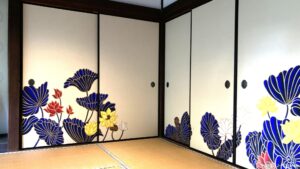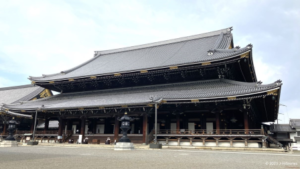Yoshizaki Temple, the base of evangelist Rennyo of Jodo Shinshu Buddhism
The largest religious Honganji Sect of Jodo Shinshu in Japan was miraculously re-established starting at the Yoshizaki Temple by Rennyo in 15C after its prolonged stagnation. Why was Rennyo able to spread his followers? What teaching did people believe? The answer lies in the presence of people who found the joy of life in Rennyo’s teaching. Yoshizaki Temple ruin and the current Yoshizaki branch temple are located in the northern part of Fukui Prefecture, near the border with Ishikawa Prefecture. From its plateau, visitors can enjoy a spectacular view of the forest floating on Lake Kitagata and the Sea of Japan that lies beyond. To the north, the former castle town of the Kaga domain in the Edo Period, Kanazawa City, can be found, while to the east, visitors can explore Japan's only museum specializing in Kutani Pottery, which is also its birthplace. This Yoshizaki area, with its rough winters, bears witness to the harsh times of Buddhist Rennyo (1415-1499, 蓮如), the 8th direct generation of Shinran, the founder of the Jodo Shinshu sect.
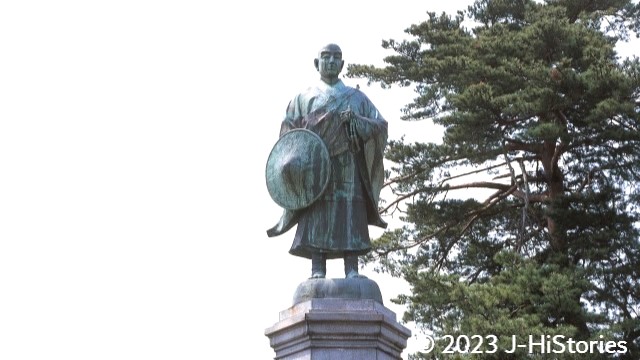
Poverty, a great famine, and the footsteps of the turmoil of warring states
Rennyo was born in 1415 as a member of the Shinran lineage. During that time, Honganji was impoverished, with followers eating diluted gruel with water and wearing paper clothing. At the age of six, Rennyo was faced with misfortune when his mother, who held a lower status, left Honganji after his father married a lawful wife. This must have been a devastating loss for young Rennyo.
In 1441, the unprecedented Kakitsu Rebellion occurred. Ashikaga Yoshinori, the 6th Shogun of the Muromachi Shogunate, was assassinated by one of his vassals. This event caused a decline in the Shogun's power and led to a period of frequent territorial and viceroyalty disputes among the feudal lords who had previously protected the Shogun for generations. The resulting rampant battles affected the farmers and the general populace.
Under these circumstances, Rennyo became the Hossu (head priest) of Honganji in 1457 after his father’s death. He was 43 years old at that time. Soon, a great famine ravaged the nation from 1459 to 1461. In Kyoto alone, more than 80,000 people died of starvation, and the Kamo River was overrun with corpses. This was an enormous number, and life was a living hell for ordinary people. The situation worsened as wars among the feudal lords continued to persist. In 1467, they finally split into eastern and western armies and engaged in a massive military clash in Kyoto, beginning the 10-year-long Onin War. At the same time, in an unstable situation without the Shogun's controlling power, the feudal lords returned to their territories to protect their people and territories. This marked the beginning of the Warring States period throughout the nation.

(Source: Shinsho Gyokuraku-ji Temple / 『真如堂縁起絵巻』真正極楽寺蔵」)
Go back to the true teaching of Shinran
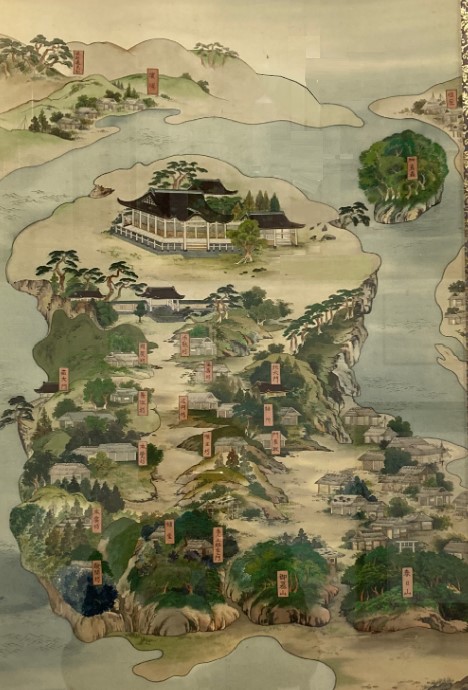
Rennyo's first act as the Hossu was to bring Honganji’s teaching back to the true doctrine of Shinran. To achieve this, he attempted to break away from the Tendai sect, even though the Honganji Temple was a branch temple of the Tendai sect's Shorenin Temple. Rennyo burned many of the Tendai sect's principal images and scriptures, promoting, Enryakuji, the head temple of the Tendai sect, to label him a "Buddhist enemy" and storm his Honganji Temple at Otani in Kyoto. Despite this, Rennyo continued his missionary activities with a positive outlook and was forced to save those people who were suffering in this world. This was the moment when Rennyo's accumulated energy began to flow out of him. He left Kyoto and traveled from place to place with Shinran’s statue, eventually establishing a monastery in Yoshizaki at age 57 in 1471. This location was a vital point in the logistics network near the Hokkoku Kaido road and the Japan Sea route, connecting Kyoto to various regions. At the same time, Rennyo began distributing his letters of sermons, written in plain Kana (a simple form of reading characters), and talismans of the "Namu Amidabutsu" to his followers to help them understand the "true teachings", even if they struggle to believe in the invisible Amida Buddha. This also helped unify the interpretation of Shinran's teachings. As the number of followers grew, the Honganji school became more powerful. It was as if a Shinshu kingdom was born in Yoshizaki.
Rennyo’s route from Yoshizaki to Osaka Ishiyama
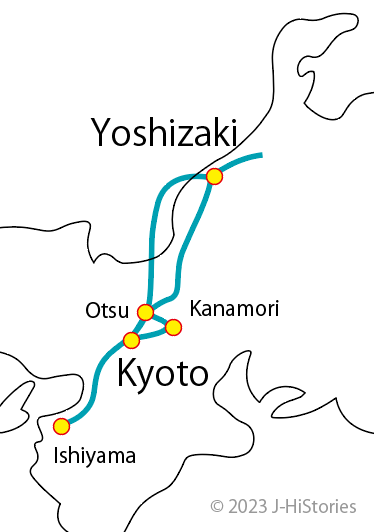
The Onin War led Yoshizaki Honganji to a battle unavoidably, fighting on the Togashi clan's side. It resulted in their victory immediately. However, due to the Togashi clan's fear of Honganji's power, instead, the followers rose, fought, and plunged the head of the Togashi clan to commit suicide in 1488. The followers ruled Yoshizaki themselves for 90 years until it was defeated by a powerful warlord, Oda Nobunaga in 1580. Rennyo left Yoshizaki and established the new head temple at Yamashina in Kyoto in 1483, bringing Shinran’s Goshinei (portrait) with him. In 1496, three years before his death, he built Osaka Honganji Temple at Ishiyama, overlooking Osaka Bay from the Uemachi Plateau, which was a key point for traffic and would later be involved in the 10-year-long battle between Honganji and Oda Nobunaga, about 70 years later. Anticipating his death, Rennyo renewed his clothes, prayed to the Shinran statue, and passed away peacefully in his sleep in 1499.
“Living with people”, Rennyo's springhead of his tumultuous missionary activities
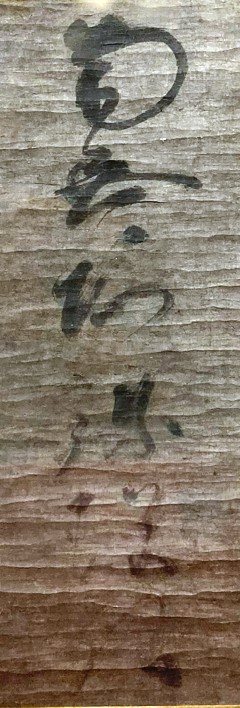
The period in which Rennyo lived was a chaotic era, starting with the rise of the samurai and leading into the Warring States period (1467-1590). Ordinary people, such as farmers, had no power to survive amid battles and natural disasters, including epidemics, major earthquakes, and typhoons. Famine was the norm, and corpses littered the streets. For the people, "living in hell, dying in hell" was the order of the day. Rennyo’s experience of poverty and his low-ranking mother's circumstance served as the springboard that led him to enter the midst of the people, regardless of their rank or position, and to live with them from the same perspective (without sitting on a high seat). He seemed to believe that people needed to be helped from the heart. At the same time, warriors also faced the risk of death on the battlefield. They were truly saved by the teaching that the moment you believe in Amida Buddha, you are guaranteed to be reborn in the Pure Land.
Honen, Shinran, and Rennyo, the Honganji school of the Jodo Shinshu sect was restored with Rennyo’s clear-cut faith
Honen, the founder of the Jodo sect, revolutionized the Buddhist world with his teaching of "Nembutsu". His pupil, Shinran, overcame the religious persecution and passed Honen's teachings down to the following generations. Rennyo restored Honganji through his missionary activities, based on his firm conviction to "save the people with Shinran's true teachings”. Enjoy a visit to the Yoshizaki Temple ruins, the current Yoshizaki branch temple, and the head Honganji Temple in Kyoto, while contemplating the long journey of Rennyo, as if his straw sandals were digging into his toes.
Rennyo lives on with the people
Every year, from April 17th to 23rd, followers of the Honganji school walk for seven days along a 240-km route on the west shore of Lake Biwa, from Higashi Honganji Temple in Kyoto to Yoshizaki branch temple. They carry a portable float with Rennyo's image inside. After holding a 10-day memorial service, they return to Kyoto over eight days from May 2nd to 9th, covering 280 km on the east shore of Lake Biwa. This Buddhist ritual has continued for more than 300 years since 1752, and Rennyo's spirit still lives on with the people.
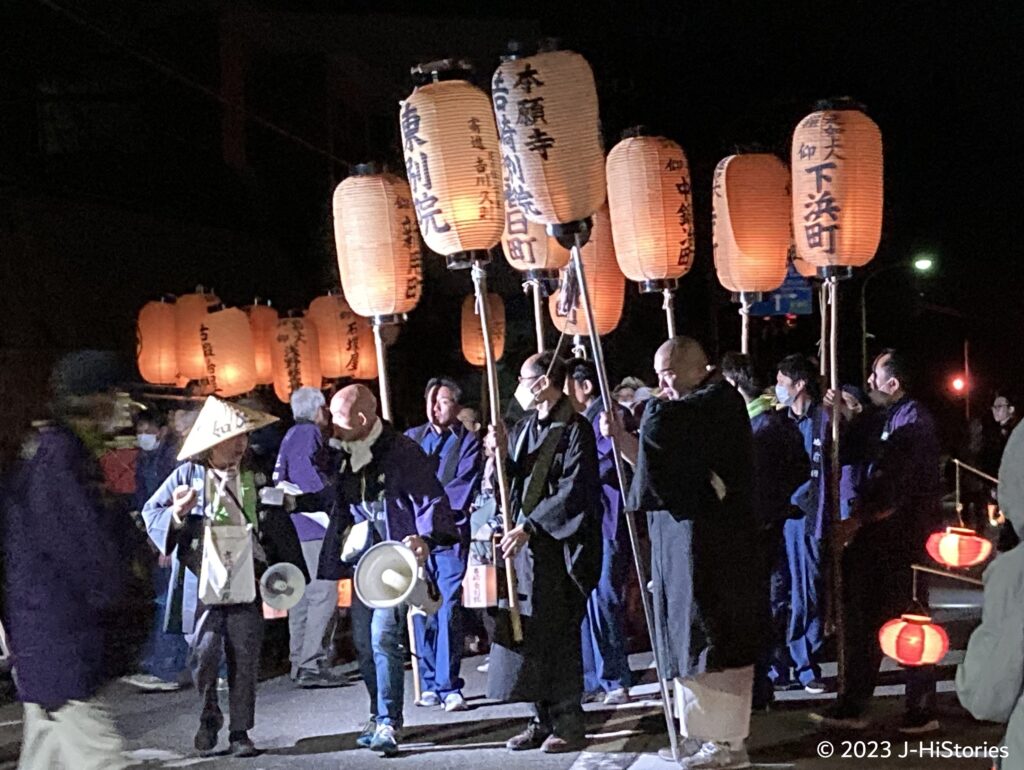
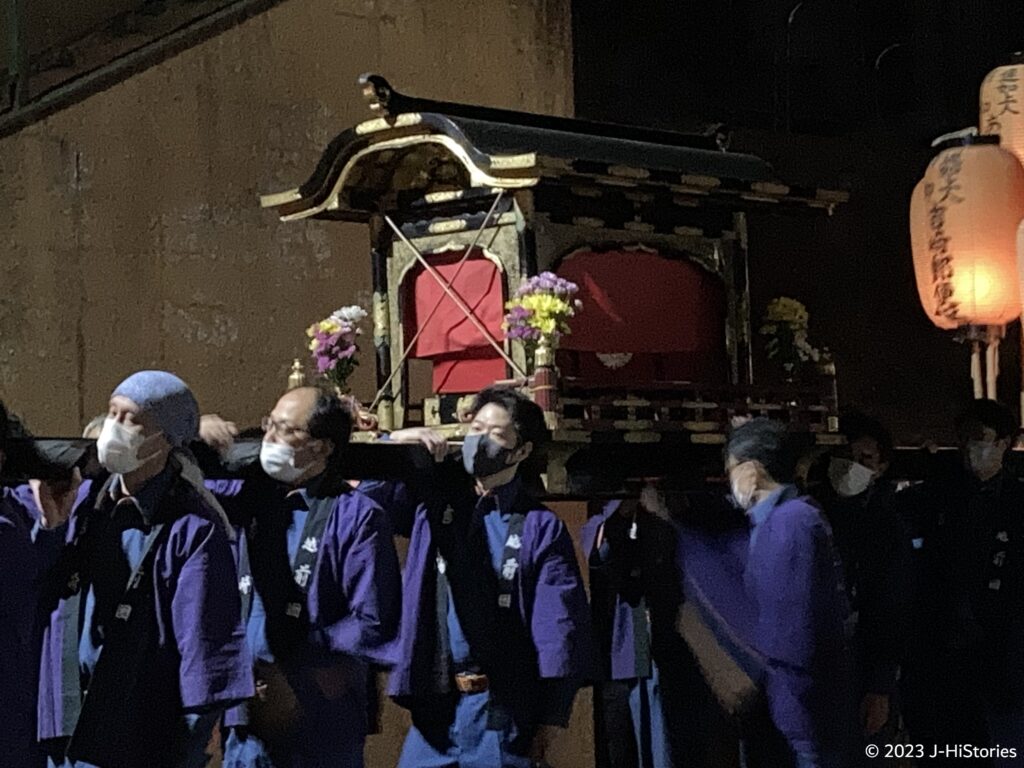

Rennyo Timeline
| 1262 | Shinran passed away | Shinran = 90 | Kamakura |
| 1415 | Rennyo was born in Kyoto | Rennyo = 1 | Muromachi - Azuchi Momoyama (Warring State) |
| 1457 | Rennyo became Hossu, Head of Honganji School | 43 | |
| 1465 | Honganji Temple in Kyoto was stormed by Enryakuji | 51 | |
| 1467 | Onin War started (- 1477) | 53 | |
| 1471 | Rennyo estabilished Yoshizaki Temple | 57 | |
| 1474 | Honganji followers fought against Togashi Yukihiyo | 60 | |
| 1475 | Rennyo left Yoshizaki | 61 | |
| 1483 | Rennyo estabilished Yamanashi Honganji Temple | 69 | |
| 1496 | Rennyo started to build Osaka Honganji Temple at Ishiyama | 82 | |
| 1499 | Rennyo passed away | 85 | |
| 1506 | Yoshizaki Temple was burnt down by warlord Asakura clan | - |
Recommendations to visit
- Access: 2 hours 25 minutes from Tokyo to Kanazawa Station on Hokuriku Shinkansen. Take JR Hokuriku Main Line bound for Fukui. Get off at "Daishoji(大聖寺)," then a 15-minute taxi.

